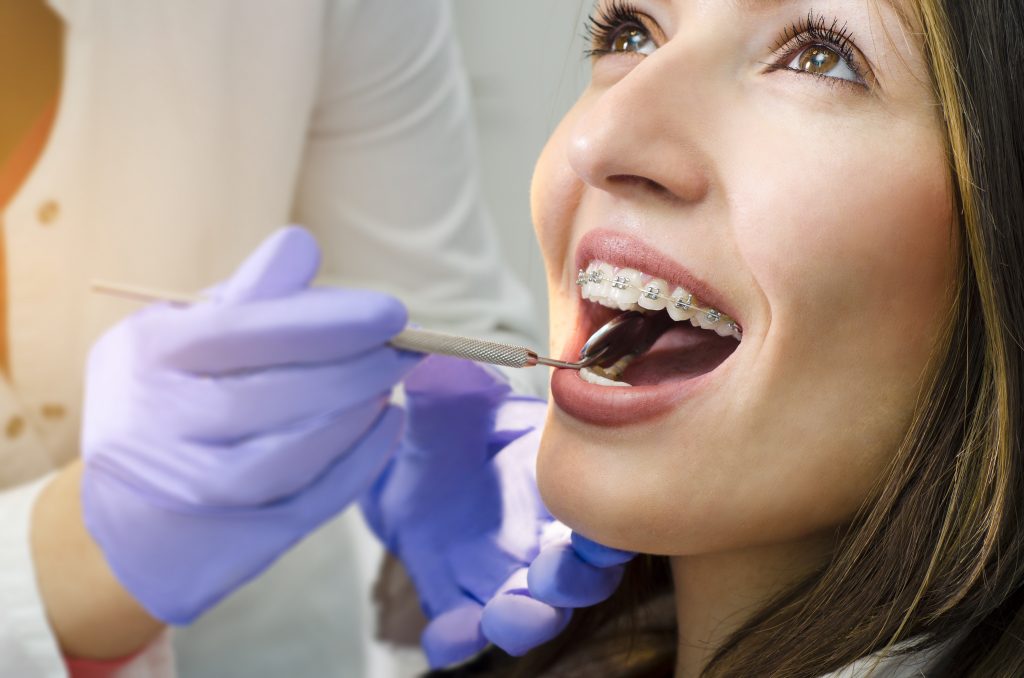The Dangers Of DIY Orthodontics
- April 26, 2018

DIY is having a moment right now, and it seems like everywhere you look there is a “how-to tutorial” or “step-by-step guide” on making something from scratch. Everybody loves a little DIY project, and while it can be a great idea when you want to build a set of shelves or repurpose some old furniture, it does have its limits. Cute decor, concocting homemade lotions and potions, even changing your own oil or painting all your kitchen cabinets – these can be fun, challenging, successful attempts at creativity and resourcefulness. But, DIY orthodontics? Not so much.
Here at Lincoln Orthodontics, we take smiles seriously and the overall oral health of our community to heart. Dr. Willett and Dr. Harre are experienced orthodontists, and our entire team is dedicated to providing only the highest-quality care, delivered with compassion and respect. We also have a variety of affordable orthodontic options to suit every patient. You are in trusted hands when you visit us, which is more than we can say for anyone falling for the trend of do-it-yourself braces. Keep reading to learn more about why this is such a bad idea, and why methods that are not backed by experience, skill, or science should always be avoided when it comes to your smile!
What are DIY orthodontics?
Type “DIY braces” into any search engine, and you will get pages and pages of results. Some videos have racked up hundreds of thousands of views by promising straighter smiles using everyday household objects like rubber bands, paper clips, bobby pins, and even aluminum foil to move teeth into more desirable positions. These viral videos, and the subsequent mainstream and social media coverage, have gained so much attention online that the American Association of Orthodontists felt compelled to issue a consumer alert. This came about after a survey of its members showed that nearly almost 15% of them are dealing with problems–including tooth loss– caused by patients attempting to replicate these DIY methods. Their alert states, in part:
“The American Association of Orthodontists is urging consumers to beware of Internet videos and websites which encourage people to try and straighten their own teeth. Moving teeth is a medical procedure and needs personal supervision by an orthodontist… Please be wary of any suggestions to move teeth with rubber bands, dental floss, or other objects ordered on the Internet.”
The most popular method of DIY orthodontics seems to be “gap bands.” These are nothing more than cheap hair elastics that can be bought anywhere for just a few dollars. The idea is that by wrapping these elastics around your misaligned teeth, and wearing them daily or nightly for an unspecified amount of time, the gaps will gradually close and your bite will be straightened. Some of the YouTubers touting these DIY “braces” claim to have seen results in as little as 45 days. When you consider the time, effort, and finances that go into orthodontic treatment, it is understandable that people would be attracted to this kind of cheap and easy option for straightening their smile. However, this is truly a case of getting what you pay for (and what you do not.) These hair elastics can easily slip under the gums and then cannot be retrieved non-surgically until the tooth is stripped of its attachment to the gums and bone… and eventually lost. A missing front tooth when the goal was to straighten is a high price to pay.

DIY dangers
It is not a new phenomenon to use elastics in dentistry and orthodontics. Once upon a time, practitioners would extract any problem teeth by placing a rubber band around them and simply waiting for the teeth to fall out after enough bone and soft tissue was destroyed. Even this method was done under appropriate supervision!
There is a potential for truly disastrous results with gap bands and other unsupervised methods for DIY orthodontic treatment. The shape of the teeth can vary widely, even in the same mouth, and this makes it very easy for rubber bands to slide into the soft tissues. Once embedded there, it will become difficult to retrieve on your own, if not impossible. If this goes untreated over time, the band will continue along its path right into the roots, potentially causing nerve damage. Throughout this process, the crowns will fan out as the roots are pulled together, and the teeth will begin to erupt and loosen, sometimes enough to fall out.
There are other serious consequences that could occur from attempting DIY braces, including:
- a crooked smile due to the teeth being moved at the wrong angle
- lacerations from bands sinking into the soft tissues
- pain from the bands slipping below the surface of the teeth
- long-term issues from moving teeth too quickly: loss of root length, gum problems, etc
- choking hazards in the form of small bands, or makeshift brackets like earring backs or beads
- toxicity from the metal in paper clips and other such materials if used long-term
- bands that are snapped directly on the teeth can crack enamel
- infected gums, which can sometimes result in the need for serious treatment, up to and including tooth extraction
- a bite that does not fit together from improper diagnosis or the wrong treatment
It is very important that the teeth are moved slowly and over a safe period of time in order to ensure the health of the entire mouth, and the integrity of the eventual results. If any damage is incurred by attempting ill-advised DIY methods to straighten the teeth, including the repair and replacement of any missing teeth or bone, it can result in complex and expensive dental procedures.
Smile shortcuts do not exist
High quality orthodontic work generally is not quick, easy, or inexpensive. It is an incorrect assumption that orthodontic treatment can be performed to the standards expected when it is not supervised. Creating the perfect smile requires education, training, and skill in the physics and biology of moving teeth. Shifting the teeth is a complicated biological process involving bone dissolving and rebuilding as they move into their new positions. It is not as simple as encouraging teeth to move closer together to close a gap or push teeth out to straighten a smile. Orthodontic treatment should always be done under the supervision of a certified orthodontist.

Quality care you can trust with Lincoln Orthodontics
Do not trust your smile to the beauty bloggers and YouTube stars when quality, affordable orthodontics are available from Lincoln Orthodontics! Our team is dedicated to making it as easy as possible for every patient we see to achieve a beautifully-aligned, healthy smile that lasts a lifetime.
If you are in Lincoln or the surrounding area, give us a call or click here to schedule an initial consultation with Dr. Willett and Dr. Harre. We will provide a thorough evaluation of your orthodontic needs, discuss which treatment options will suit you best, and work with you or your insurance to create a payment plan that makes sense for you. You will always know exactly what to expect before treatment begins.
To get started on the safest path to a straighter, healthier smile, choose Lincoln Orthodontics!


